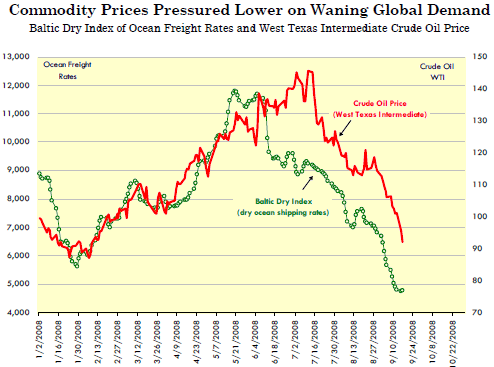



CME: Certain Factors to Affect Livestock Markets
US - CME's Daily Livestock Report for 16 September 2008.It was another brutal day in the livestock and grain futures markets as traders sought to digest the broad implications of crumbling US financial giants. Corn and soybean futures were down some 30 and 55 cents respectively while live cattle futures dropped as much as 265 points (Apr 09) and all deferred lean hog futures posted significant declines.
Much of the talk in the market on Tuesday focused on the impact that the rapid unwinding of positions held by large institutions, some of them now dealing with their own insolvency, had on the overall market. Excessive speculation may have been blamed for ever rising commodity prices (that argument seems so old right night) and excessive speculation is blamed again for the plummeting prices.
We do not proclaim to know what, if any, effect fund liquidations have had on futures prices and will let others with a lot more expertise in this area debate the point. But we would like to note that the slide in commodity prices did not start yesterday, or the week when Fannie and Freddie went belly up. Rather, prices have been drifting lower for a good part of this summer and, we suspect, a big part of it is due to a slowing global demand for commodities.
The Baltic Dry Index (an index of ocean shipping rates) is often viewed as a good proxy of global commodity demand. Because shipping capacity is fairly inelastic in the short term, ocean shipping rates are seen as an indicator of growing or declining demand for raw materials. The index has declined precipitously since May and currently stands at 4760, some 60% lower than the peak on May 20 and 42% lower than a year ago. There is plenty of additional evidence that global growth may be waning. The surge in the value of the US dollar may have caught many by surprise but it reflects the changing monetary stance of central banks in a number of key economies. The decision by the Chinese central bank to cut lending rates and lower bank reserve requirements was especially poignant, illustrating sagging growth in one of the most vibrant growing economies. Chinese demand was often one of the main bullet points when explaining the drivers for surging commodity prices.
Livestock markets will likely continue to be affected by the global macro factors going forward but they also will reflect the shifts in supply fundamentals during recent months. In all this uncertainty one thing is certain, the opportunities for risk and rewards remain excellent.









